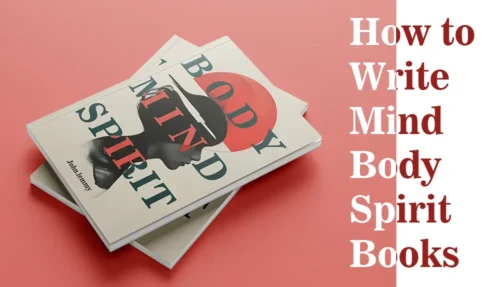We take you step-by-step from your first idea, through writing, revising, preparing the manuscript, printing, and marketing your self-published memoir

Writing your memoirs — either as a legacy for your family and friends or for commercial reasons — is a noble, fascinating, and worthwhile project which can bring you immense personal satisfaction and give great pleasure to others. But it’s also a lot of hard work. It’s especially challenging if you aim to sell your memoir. Writing a memoir is one kind of challenge. Learning how to write a memoir that people will buy, read, and recommend to their friends, is another.
Fortunately, we’ve been in the business for decades; helping authors just like you to print beautiful, attractive, professional editions of their memoirs either as personal passion projects or to take to market. While we’re printers not publishers — an important distinction we’ll explain in more detail later — we do understand the industry inside out. So, let’s dive in as we guide you through the whole process from refining your idea, to writing and editing your manuscript, to printing, distributing, and marketing your finished book.
Memory and meaning
Writing a memoir is — obviously — a very personal thing. It’s your story, your experience, your feelings and memories, your heart laid bare. It’s a brave thing to do, write a memoir. Even a humorous one without a hint of scandal will reveal truths about you and your past that most people might prefer to keep private.
But a memoir isn’t a confessional. And while it may be therapeutic, it’s not therapy, either. Your memoir will be about you, but it must be written for the reader. What does that mean?
It means that before you start to write, you should ask yourself: what common emotional connections can my experiences make with other people? What deep life lessons can we all learn from what’s happened to me? What can a reader take away from the story of my life that will help them to live theirs better?
In other words, your memoir must have ‘meaning’. And meaning comes from making those connections between the personal and the universal. Your readers must be able to relate to your life and learn something from it, even if they have no direct experience of the time, events, or people you write about in your book. So, try to dig out a theme from your life experience; something with which others can resonate.
Work out what and why
Writing a book is tough. You may think that putting your memoirs down on paper will be easier than writing a novel — after all, the plot has already been worked out, right? But think again. A memoir isn’t a complete autobiography, it’s a carefully curated series of memories collected around your central theme. So, before you can start writing, you’ll need to think with great care about which experiences and periods of your life to include, which to pass over lightly, and which to miss out altogether.
Coming up with a universal theme as we mentioned before will help you make sure that every aspect of your life’s story that you include helps to elucidate, exemplify, and examine the core theme of your book: which may be how love conquers adversity, say, or how willingness to change brings happiness, or how loss can lead to deeper understanding, for example. Whatever your theme, you should be able to sum it up in a single sentence. Pin it up in front of you wherever you write, and as you start to select and structure your story, ask yourself if what you’re writing is in keeping with the theme.
This not only helps make sure that everything you write will resonate with and have meaning for your readers, but it will also help keep you on track and inspire you during those dark and difficult days — and they will come! — when you can’t seem to get the words down and even when you do, they come out all wrong. Every writer, even the most famous or experienced, goes through these tough patches. The secret is to remember why you’re doing this and refocus on your theme. Then, just keep calm — as the saying goes — and carry on.
Planning with purpose
But before you begin to write, it’s a great idea to make a plan. Again, knowing who you’re writing for and what you want to say by sharing your memoirs, will help you build a good structure. Even though you’re writing your true story, if you want to write a memoir that people will be happy to pay their hard-earned dollars to read, you should still think in terms of ‘plot’ and ‘structure’.
So, think about which events you choose to recount, and in what order, to create a sense of drama and suspense. Pick out those moments of tragedy and tension, those days of blissful happiness; those ups and down of your life, and use them to give shape and color to the narrative you build around your theme.
A word about order at this point. You don’t need to start with your birth and wind up the day before yesterday. In fact, you almost certainly shouldn’t do that. While it would be confusing to play around too much with the fundamental chronology of your life, you can time hop a little to create certain effects, build emotional tension, and get your readers curious to find out what happens next, just as they would reading a good novel.
A popular and very effective technique is to open with a more recent memory, or a more current event, and hint that things weren’t always this way, or that this situation wouldn’t have been possible without something — or someone — in the past. Having introduced yourself and having established curiosity about what changed and why, while hinting at your theme, you jump back in time to before the change took place and begin your story there.
Either way, at the planning stage, take your time. Nobody needs to read your plans. Experiment, try out different ideas, chronologies, themes, and ideas, until you settle on one that works for you and you believe will work for your readers, too. You should also read as many memoirs as you can — especially the most popular and famous — not all of which are about otherwise famous or extraordinary people, to learn how others have done it.
Then write out your plan. Some like to write a detailed, chapter-by-chapter structure, others prefer a less detailed bullet point outline. That’s a personal choice and down to your creativity and the way you prefer to work. But a plan of some kind is a useful tool to keep your memoir ‘on-message’ as you write.
Writing and regularity
Now, you’ve thought about your memoir, you’ve focused on what your readers can take away from your story, you’ve developed a theme, and you’ve written a careful, selective structure or outline for your book. At last, you can write. But oddly enough, this is the stage where so many aspiring writers trip and stumble. Because dreaming about being a writer and actually writing are two quite different experiences.
As we said before, no writing is easy. It will take effort. It will take time. By turns it will be exhilarating, frustrating, seemingly impossible. There will be days when you want to give up, when you’re convinced it’s no good, when you wonder why you ever got started. But all writers — even the most famous and successful — always go through these experiences with every book they write. It’s just part of the package. It goes with the territory. Just go with it and ride it out.
The most powerful strategy you can adopt to make sure that you see your book through to the end, is to develop a regular writing habit. Regularity is more important than quantity. If you write just a few hundred words a day, every morning, say, or in a quiet moment in the evening after everyone else has gone to bed, but do so regularly and without fail, you’ll achieve a lot more than if you spend a weekend churning out thousands of words only to fall back exhausted and not get back to it again for months.
In short: prepare for tough times as well as flashes of inspiration, and keep writing anyway. Develop a regular writing habit you can stick to, even if you don’t write many words each day. And then, get on with it and stick at it until you have a finished draft.
Start marketing and promotion while you’re still writing your book
While we will print your books for you and we can help you with a lot of good advice, technical stuff, and design ideas before you get to that stage, printing and publishing aren’t the same. Once your book is finished — physical copies you can sell — you’ll be responsible for marketing, promotion, and distribution. You can handle all of that yourself if you have the skills, knowledge, and experience or are willing to learn. Or you can engage a third-party specialist book marketing agency to do it for you. Most self-published authors tend to compromise: outsourcing some of the marketing to others and handling some themselves.
But whichever way you go, it’s a good idea to start thinking about marketing and promotion of your memoir before you’ve finished writing it. Building interest and buzz in advance of your book launch can only help, and it all takes time, so the sooner you get started, the better. The other advantage is that if you’ve shouted from the rooftops that you will be publishing your book and the whole world knows about it, you’ll keep yourself accountable and get the job done!
Common ways to get started on your marketing plan while still working on the book may include any or all of the following:
- Setting up an author website and blog and writing about your book, releasing snippets and teasers, and publishing other articles of interest to your target audience to draw them in
- Setting up social media profiles under your authorial name or book title, networking, sharing and re-sharing relevant posts, and joining in conversations to build a community ahead of your launch
- Reaching out to book bloggers and pitching guest post ideas or asking for interviews about your life and book and, later, reviews
- Approaching libraries, schools, and colleges to do talks and workshops
- Writing and sending press releases to the newspapers — local and national — about your journey as a memoir writer
- Building an email list through your website, blog, and social media — these are people to whom later, you can sell your book directly
- Telling anyone and everyone you know!
While you’re doing all that, educate yourself about how to set up accounts on Amazon, Barnes & Noble, with Ingram, and other major book distributors. Work out a detailed marketing plan for your launch and the first year after. There’s a lot to learn, so start early, take the best advice you can find, and if you have the capital to invest, outsource some of the work at least to a reputable marketing and promotions agency with a good track record.
Finish your book and then write the title
It’s likely that you already have a title in mind, but it’s possible that you have no idea what to call your book. Don’t sweat it. In most cases — while it’s fine to have a working title — you’ll want to leave finalizing your title until almost last. Why? Well, because often the best titles turn up unexpected as you write the text. Or the title you think is cool, your editor (more about editors next) — points out will be incomprehensible to anyone else. Or just because — despite all your careful planning — you realize only near the end of your first draft what your book is really about.
Now this is important, so if you’ve just nodded off, give yourself a shake: as the great Ernest Hemingway said, “All writing is rewriting.” When we say “finished your book” we don’t mean got to the end. We mean a text that is, yes complete in the sense of the start, the middle, and the end, but also revised, reworked, and rewritten to make sure that every word counts and that it’s as polished and fine as can possibly be.
And even when you’ve got it as far as you can get it toward perfection on your own, there’s still more to come. Because, if you seriously want to write and self-publish a professional level memoir that will sell, you’ll need an editor. And your editor — at least if they’re any good — will critique your efforts and suggest even more changes.
Get your memoir edited and proofread
You will need an editor. Not a single book you’ve ever bought in the bookstore went to market exactly as the writer first penned it. Editors don’t ‘interfere’ and ‘mess’ with your manuscript. They come at it with professional experience, knowledge of the market, and a keen ‘outside eye’. They give you positive, helpful critiques and suggestions for ways you can make your manuscript even better.
When you’ve been working closely on a book for months or even years, it’s hard to distance yourself from it and make an objective assessment of its strengths and weaknesses. That’s why we have editors. It’s their job. So, before you go to print get your book edited, and then proofread.
Editing and proofreading are two different jobs. Editors tend to look at the bigger picture and help you make sure that your book is well-written, flows, is logical, and a pleasure to read. A proofreader goes through the edited text word by word to spot spelling mistakes, grammatical errors, and typos. Some editors also proofread, but usually these are two separate processes and you need different people to carry them out.
If you were publishing with a mainstream publishing house, then you’d be assigned an editor and the proofreading would be done in-house. If you’re going to self-publish your memoir, then you’ll need to hire a freelance editor and proofreader. Take your time, vet a number of editors, compare their experience, qualifications, and fees, and make a careful choice. Not all editors are equal and it’s important to get an editor who is both qualified and experienced with the kind of book you’ve written. It’s a great advantage if you both like each other, too, and you feel that you can trust your ‘baby’ in the editor’s hands.
Libel, the law, and avoiding litigation
When writing your memoirs, you will obviously also be writing about other people; real people who may still be living. And whether alive or dead, you need to be careful not to infringe laws relating to privacy, libel, consent, and defamation. Even if you don’t think that you are presenting anyone in a way that is untruthful, scandalous, or paints them in a poor light, you can’t be too careful. You never know how other people perceive things or how they feel.
The best thing you can do, if possible, is to obtain legal, written consent signed by the subject and a witness, ideally in the presence of a lawyer. So, that will mean sharing passages of your memoir with those mentioned in it and asking their permission to go ahead and publish the content. If they refuse, you can offer to change what you’ve written, how it’s written, or omit it from the book.
But if there are people you can’t contact, or whom you don’t trust, and you can’t tell your story without involving others, you should take legal advice before you go to press. We can’t give you legal advice and so we won’t even try. But we do know that the laws — national and international — around issues such as libel and defamation are complex and involved and lawyers often debate between themselves exactly what they mean and how they should be applied.
The advice we can give you is don’t shrug this off assuming “it’ll be okay”. Consider it a core responsibility of any memoir writer and a fundamental act of respect for the other people in your book. Often, writers change the names and identities of the people in their books and publish under a pseudonym. That’s always an option and may be something to consider. But even then, if someone recognizes themselves in your book and isn’t happy with the way you’ve portrayed them, they could still bring legal action against you.
Libel and defamation cases are often complex and long. They can also get very expensive. So, do your due diligence and take every legal precaution to protect yourself and the people close to you before you publish.
Acknowledge and thank all those who helped you
This is optional, but it’s a kind gesture and a thoughtful one. You’ll have read — or skipped over! — the ‘acknowledgements’ section at the end of books, we’re sure. This isn’t for your general readers, but very few books are the work of one, solitary individual. There are usually people — friends, spouses, children, and colleagues — who have supported you as you’ve gone through the long, difficult process of writing and self-publishing your memoirs. They may also have put up with your absence from their lives, your mood swings, your times when you almost gave up. They probably deserve your thanks.
It’s also considered appropriate to thank your editor and any other professionals involved in your book’s production; an illustrator, research assistant, or photographer, say. The only entity you needn’t thank is your printer! Honestly, we’ll have helped a lot, but we don’t expect to find ourselves in the acknowledgements. The acknowledgements are for those who supported you at a more personal level or who made direct contributions to the content.
Write your ‘blurb’
The ‘blurb’ is the content on the back cover of your book. It’s typically an enticing summary of your story, with enough information to intrigue the reader, but not so much that it gives everything away. You can write the blurb yourself or you can pay a third-party specialist to write it for you. Often, the back cover has quotations from reviews and endorsements by other — well-known — authors after the blurb. Unless you know famous folk, you’ll need to skip that part. But you could still get a few reviews to quote by distributing advance electronic copies of your book to book-bloggers and to your ‘Goodreads’ community, for example.
Cover design, interior formatting, and an ISBN
Once all the textual content of your book is finalized, edited, and proofread, you’ll need to get the cover art and layout designed. Unless you are qualified and experienced in book design, don’t try to get away with doing this yourself. It’s not just about the artistic side, but the technicalities, too. We have our own in-house designers if you’d like to work with us, but even then, you’ll need to provide the basic artwork or photography for them to work from.
We’re often told not to judge a book by its cover. But we all do. It’s the first thing a potential reader sees, after all. It has to get them to pick up the book and look inside. So, if you cut corners and pinch pennies on other aspects of your book creation, splash out as much as you can afford on first-class cover design. You’ll also need to get the interior layout done and then all the files prepared for print. Your designer should know how to do this, but we can always help if there’s anything you’re not sure about.
Don’t forget to order an ISBN and a barcode which you can do through Bowker in the US and through Nielsen in the UK. You’ll need to have these registered and printed on your book cover for stores to identify your book and to run through the point of sale.
You’re now very nearly ready to go to print — although there’ll still be some tweaking of your layouts based on the choices you make about paper stock, bindings, and so on. You’ll also need to decide whether to publish your memoir under a hardcover or as a paperback. Let’s look at that now.
Paperback, hardcover, or both?
Most traditional, mainstream publishers issue a hardcover edition of a book at launch and then follow up with a second edition in paperback once the hardcover sales begin to fall off. It’s a good system and works well. Hardcovers are only marginally more expensive to produce than softcovers, but they have a perceived value which is much greater than their material worth. That means that you can make a greater profit on unit sales. But, as not everyone wants one, you’ll most likely sell fewer. Mainstream publishing houses choose to sell the more impressive, authoritative, bookshelf-worthy hardcover first, and then follow up with a longer print run on the paperback once the buzz is up, the reviews are in, and people start to recommend the book to their friends.
But there are a few other factors to consider, too, when deciding to self-publish either hardcover, paperback, or both. Readers have certain expectations of certain genres. So, a spicy romance might go straight to paperback, and readers will have no problem with that. After all, it’s a genre that relies on a readership keen to pick up the latest title, devour it in an afternoon, and be ready for a new one that evening! But memoirs tend to be considered to be more intellectually weighty or of higher cultural and literary value. For that reason, many are only released in hardcovers.
In the end, it’s your choice. It will depend on your ambitions, how well you think your book will sell — hopefully based on market research rather than hope alone — and the budget you have to spend. Better to go straight to paperback than not publish at all, but if you have the capital to invest, a short promotional run of hardbacks, with a longer softcover run waiting in the wings, is a good model.
Print your book!
Now, at last, it’s time to print your book. But there are decisions to make here, too. For example, how many books will you print? This will be a compromise between how many your research (and the size of your email list) suggest you will be able to sell, the size of your budget, and how you’ll handle sales and distribution. Just remember that the more books you get printed at once, the cheaper they are per unit.
Arrange distribution
Self-publishers will approach this in a variety of ways. For example, you can sign up for Amazon’s partnership program (not to be confused with their affiliate program which is something else) and have them hold your books in their warehouses. Then, as they sell through the Amazon store, they’ll handle packing and shipping — for a fee, of course.
You can sell the books directly through your website, e-commerce store, or email list, and do all the packing and mailing out yourself.
Or you can pay another fulfillment company to handle that for you.
If you print your book with us, we can offer storage for a year, during which time we can send them to you in batches — or even just one at a time — as you need them.
Your book launch
Now you’re ready to launch your self-published memoir into the world. A book launch can be loud or quiet, accompanied by a big media splash or a more private affair between personally invited associates. It all depends on your budget, your contacts, and your personality.
But you don’t need to have a big party with popping champagne and speeches. Most books — even from the big publishers — don’t get that treatment. The average book launch — if it isn’t just an hour in the office with a slice of cake and a happy mood stolen from the rest of the working day — is usually arranged to happen in the author’s local bookstore.
The local independent bookstore promotion is likely the best way to go. It won’t cost you anything but time and organisational skills and it benefits both you and the store (who you should ask to stock your book several weeks ahead of the official launch). On the day, you can also make your first direct sales of signed copies.
But if you’re a shy type and don’t relish public appearances and parties — as many authors are — don’t sweat it. These days, online launches on social media or practically no launch at all are also options. It can be lovely to celebrate your achievement. But, after all, the real test comes next as you work hard to promote and sell your book.
Ongoing marketing, promotion, and sales
It would be lovely if once you’d launched your memoir, you could retire to the poolside with your favorite tipple and wait for your accountant to call you with news of your astonishing sales figures. But chances are, this is where the real work starts.
If you’ve followed our advice, you’ll already have learned a lot about marketing and promotion because you’ll have been doing it while you were still writing the book. By all means take a day or two off after launch day. But then, you need to switch your focus to your marketing campaign and put every ounce of energy into it you can.
Persevere. These things are hard to predict. Books that sell can be split into two categories: those that sell a lot of copies fast, hit the bestseller lists, and then fade from sight; and those that sell slowly, a few copies a day, but keep on selling year after year. Both are good, but in terms of building a career as a self-publishing writer, the second one, while less snazzy and romantic, is probably the best.
And talking of your career, now you’ve self-published your first memoir, you can crack on with the next. That’s one of the joys of writing a thematic memoir rather than a complete autobiography. You’ll always have more material and another theme to inspire the next memoir, and the next.
Talk to us
We hope you feel that you know now how to write and self-publish a memoir that people will buy. As soon as you’re ready, talk to us. We can’t write your book for you, but when you’ve done that and you want to print a beautiful, stylish, but affordable edition your book, we’re here to help. One of our enthusiastic and experienced team will be happy to discuss your ideas, liaise with your designer, and walk you through our printing process. And we’d be happy to give you a no-obligation quote at any point. We look forward to collaborating with you!












